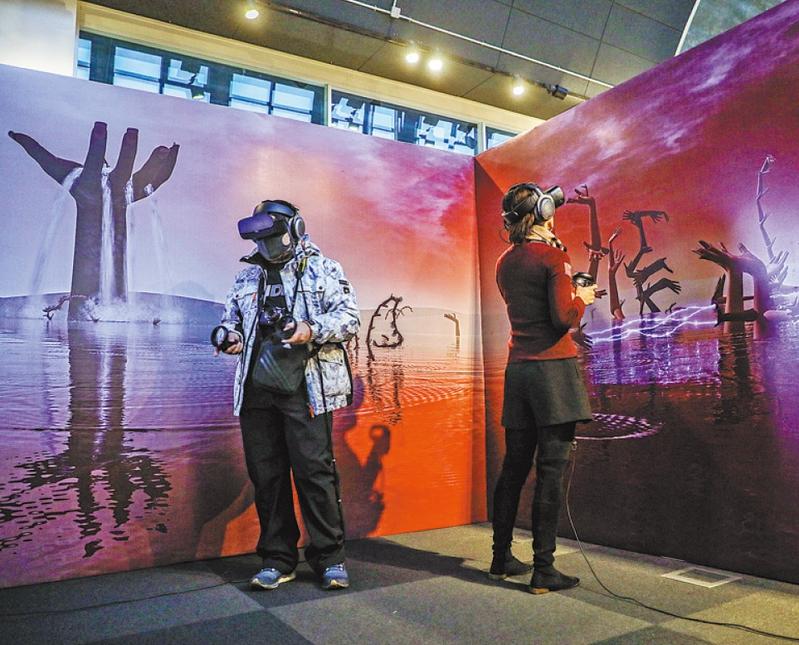 Visitors donning headsets create countless hands in a virtual world. Using the hands, they can explore their superpowers, such as climbing high into the sky or diving into deep water. (PHOTO PROVIDED TO CHINA DAILY)
Visitors donning headsets create countless hands in a virtual world. Using the hands, they can explore their superpowers, such as climbing high into the sky or diving into deep water. (PHOTO PROVIDED TO CHINA DAILY)
Questions about personal identity are becoming more difficult to answer as people spend more time in the virtual world.
The VR work transports audiences into an environment that blends local landscapes and replicas of iconic Western structures
A recently launched show using extended reality, or XR, technologies in Beijing seeks to explore these issues.
Negotiable Matters: Identities presents six works employing virtual reality, augmented reality or mixed reality at the Goethe-Institut China in Beijing, allowing visitors to immerse themselves in an environment that blends virtual and physical realities.
Co-curator Che Lin says each work provides a perspective for audiences to reflect on identity.
"Technologies featured in these works open up a world of possibilities, free of any constraints," Che says.
ALSO READ: Can a holographic screen help a new phone break out?
The Real Thing is a VR film that brings visitors into Chinese cities that feature Western monuments, such as the Eiffel Tower and London Bridge.
The VR work transports audiences into an environment that blends local landscapes and replicas of iconic Western structures.
Work of VVVR is a voice-controlled tool that allows people to "see" their voices transformed into geometric patterns as they speak.
It enables two people sitting opposite to each other to interact in a virtual space through their voices-or to be more exact, through the voices translated into changing shapes and colors flowing from their mouths-by wearing VR headsets.
Another highlight is the interactive work, HANAHANA, by French artist Melodie Mousset, a pioneer in the field of art and new media.
Visitors can don headsets to create countless hands in different sizes and colors in a virtual world. They can walk around, exploring their superpowers, such as climbing high into the sky or diving into deep water, using the hands they design.
The works were created by artists from around the world, including those from such countries as Switzerland, Italy and France.
None of the artists were able to attend the show's opening on Nov 21 because of the COVID-19 pandemic. Also, visitor numbers are restricted to 13 every two hours due to limited space and equipment.
Feng Shuo, one of the show's organizers with the Goethe-Institut China, says it's a pity that only a few people interested in new technologies and art can enjoy the immersive experiences they provide. Only 400 viewers can make appointments per week.
She says they've prepared for the show for a long time, and it's a rare chance for Chinese art lovers to experience six XR works in one show.
The last VR exhibition she saw featured oil painter Yu Hong's VR work two years ago.
Che says VR and XR shows are relatively new to China, and it's expensive to organize such exhibits because of equipment and space.
But more artists from home and abroad are embracing new technologies.
READ MORE: Age of restoration
Some artists in the show are tech-savvy. For instance, Bodyless' producer Hsin-Chien Huang is good at programming and algorithms. His work lets viewers experience an old man's life through his eyes.
Che says the tech used in Negotiable Matters provides a perfect chance for viewers to change their identities and see life from other perspectives.
"When they come back to the reality, maybe they can reflect more on themselves," she says.


